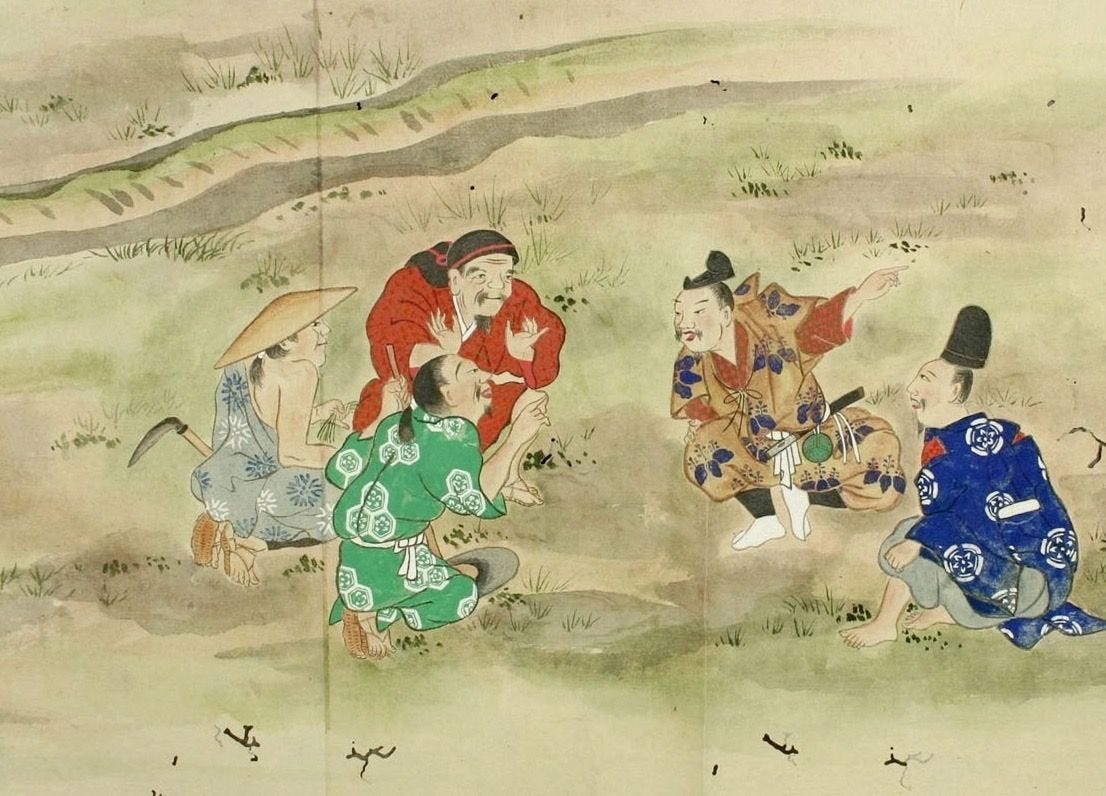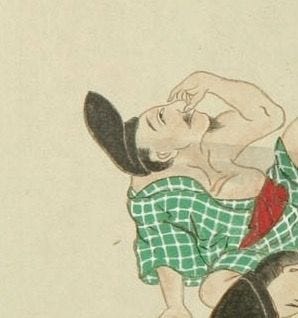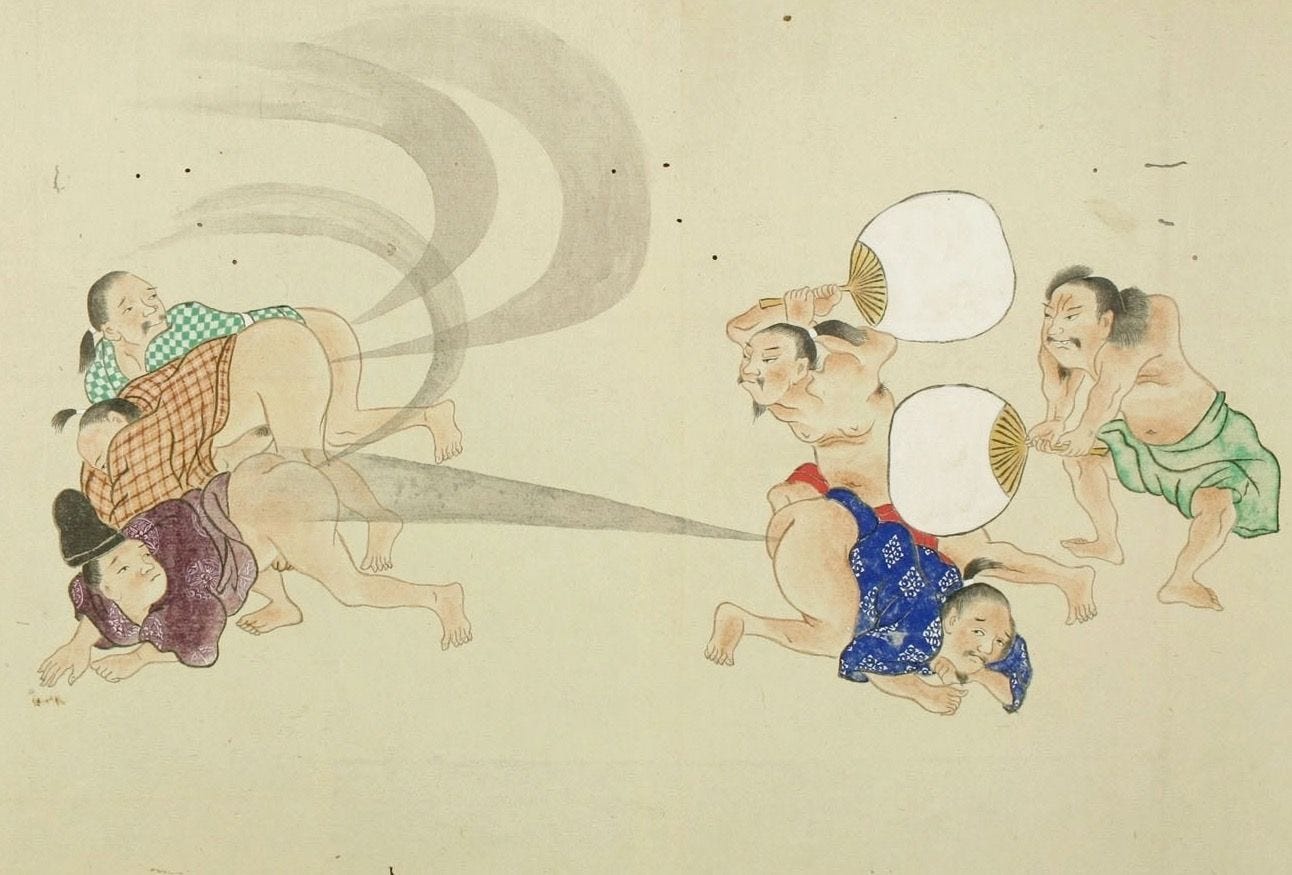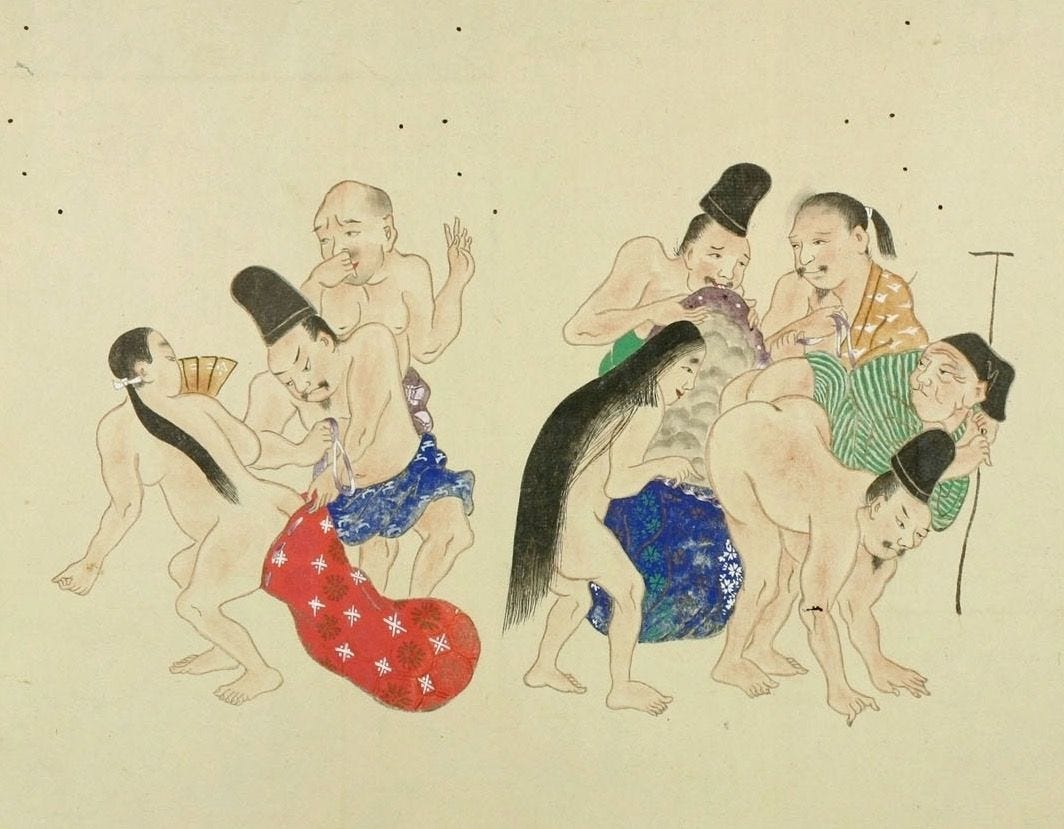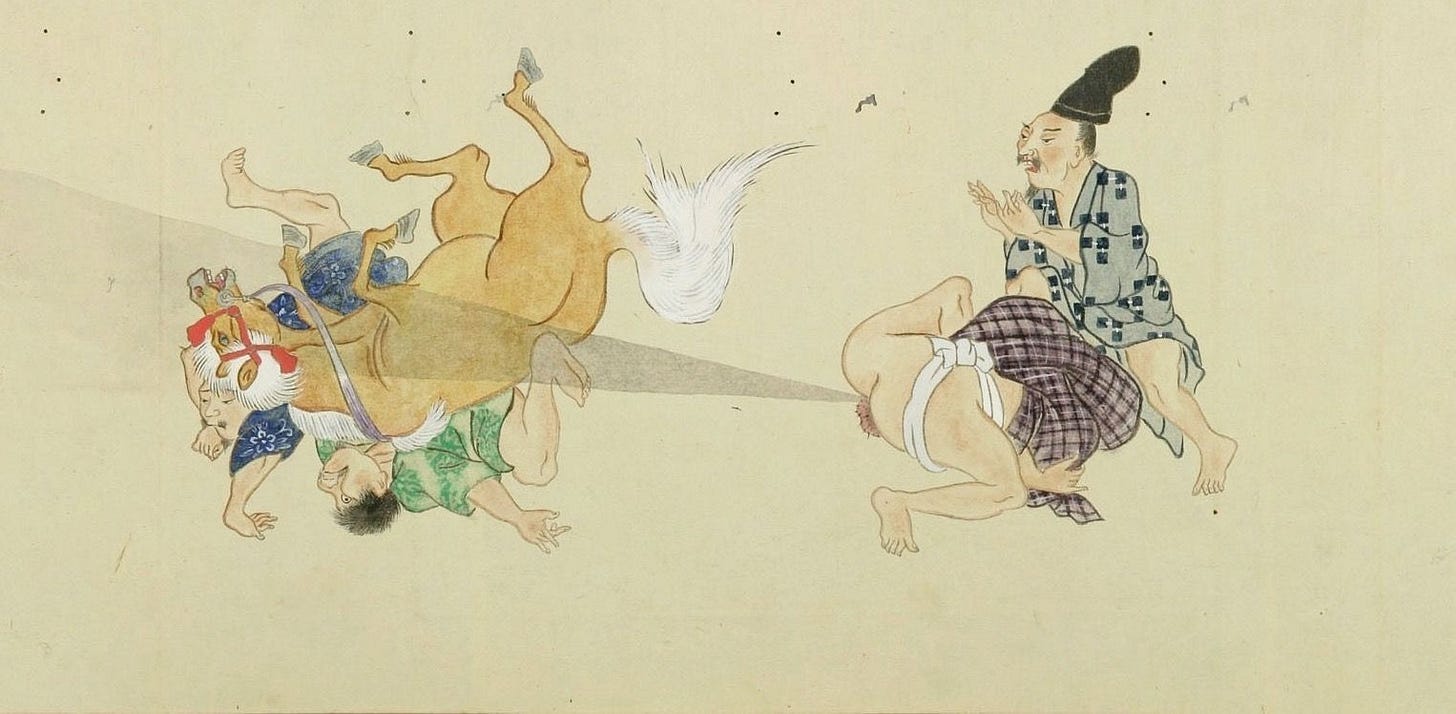This post was originally sent to my debut mailing list (before I moved to Substack). Why is it a favorite? Because it defies Western stereotypes about the Japanese. They are warriors, relentless businesspeople, artists, writers, and culturally refined. And there is truth there, but my years in Japan (and my decades with my husband) have exposed other aspects to Japanese personalities.
On the plus side, I’ve met generously kind people in Japan, and have formed lasting friendships. I will always be in awe of Japanese art, writing, and architecture. And the food? Don’t get me started.
On the other hand, chauvinism, written as the following four-character aphorism in Japanese, 男尊女卑 (dansonjohi, literally respect men, revile women), continues to impact society. The influence of CIA meddling in Japanese politics during the 1950s still has effects today (and is one reason why Japanese lawmakers are generally conservative). And although many people conceive of Japan as sexually progressive or kink positive, the combination of Confucianism and chauvinism means that most progressiveness is afforded only to men.
And yet, I also have to report that I am a big fan of Japanese senses of humor. My husband, in particular, has a terrible weakness for Helen Keller jokes. Puns are rampant (especially in our household). And everyone loves a good fart joke.
28 April 2022
Today I’ll take a strange visit to history.
The story begins with a monk who happened to be a painter of Buddhist art.
His name was Zōshō Toba and at some point between 1110 and 1125 CE (nine hundred years ago!) he completed a long scroll of art work.
The first half of the scroll was a treatise of sorts on the different appearances of male genitalia. (And before you ask, no, I have not yet found any extant images from that scroll.)
The second half of the scroll depicts the art of farting. Zōshō thought (rightly, I think) that the humor of farting outweighed the shame factor, and the scroll emphasized people's reactions to the smells as well as the physical contortions humans can perform when, as my brother would say, we let one fly.
Sadly, that half of the scroll is also lost to history.
How do we know it existed?
Because other artists credited Zōshō as their inspiration when they created copies of it.
One such copy was done in 1846 CE, late in the Edo period, by Moronobu Hishikawa, and has been preserved in the library at Waseda University, in Tōkyō.
I can't remember who it was who originally alerted me to this 1846 scroll, and there is a public domain copy available to download here, but I hurt myself laughing when I saw it.
The story depicted in the scroll begins with five gentleman plotting together (at the top of the newsletter).
The next thing we see is them getting their hands on a large quantity of root vegetables. I think they are lotus roots, but they could be sweet potatoes.
Things escalate quickly as they unleash their weapons.
Let's just take a moment to commiserate with this poor fellow, clearly regretting his original plan.
The battle involves more and more people, and tactics get more creative. Talk about OnlyFans!
Women join the act, and the notion of a weapon of mass destruction is hatched.
Bam!
Even horses go flying!
And in the grand finale, a shrine is leveled.
There is a coda that sends an innocent vendor and his cat flying too!
I hope you enjoyed this airy diversion. I’ll be back next week!





